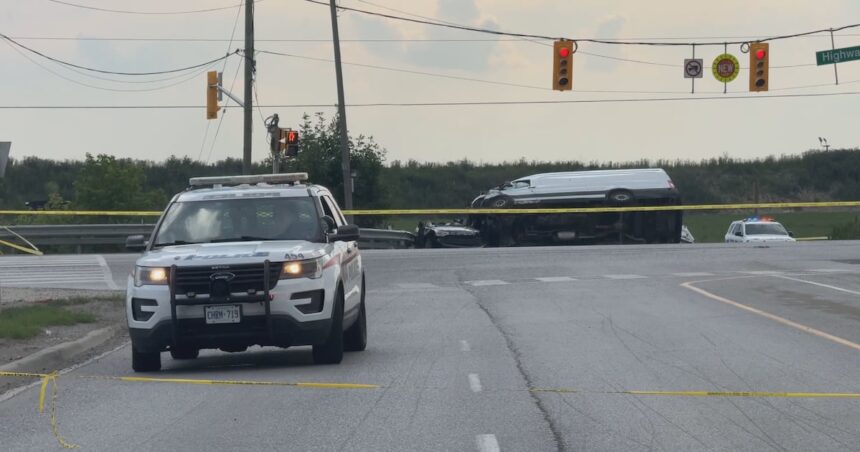Article – A young man clings to life in a Toronto-area hospital while the driver responsible—a man with five previous impaired driving convictions—awaits his day in court. This isn’t just another traffic incident. It represents a systemic failure that continues to endanger Canadians despite years of advocacy and legislative reform.
When Jagroop Singh, 21, left for work on March 17, his family had no reason to believe it would be anything but another ordinary day. Hours later, he was fighting for his life after a suspected drunk driver in a black Lexus slammed into his vehicle at a Brampton intersection. The crash left Singh with catastrophic injuries including severe brain trauma.
“His life has changed forever,” says Kuldeep Sandhu, Singh’s uncle, his voice breaking during our interview. “He was just going about his normal day, and now the doctors aren’t sure if he’ll ever walk again.”
What makes this case particularly disturbing is the history of the accused. Court records show Myles Sears, 44, has accumulated five previous impaired driving convictions dating back to 1999. His license had been reinstated despite this pattern of dangerous behavior.
“This represents a fundamental breakdown in our system,” says Mothers Against Drunk Driving Canada spokesperson Tracy Crawford. “When someone demonstrates such consistent disregard for public safety, we need to ask serious questions about how they’re still permitted to operate a vehicle.”
I reviewed the court documents connected to Sears’ previous convictions. The pattern is disturbingly consistent: conviction, short-term license suspension, reinstatement, repeat offense. His last conviction before this incident was in 2019, resulting in a three-year driving prohibition that had recently expired.
Legal experts point to gaps in Ontario’s system for handling repeat offenders. While first-time offenders face serious consequences, including the mandatory Ignition Interlock Program, the system lacks permanent solutions for those who repeatedly demonstrate they cannot be trusted behind the wheel.
“The Criminal Code has provisions for declaring someone a ‘dangerous offender,’ but we rarely see this applied in impaired driving cases unless there’s a fatality,” explains Avery Goldman, a Toronto defense attorney who specializes in impaired driving cases but is not connected to this case.
Statistics from Transport Canada show that despite decades of public awareness campaigns, impaired driving remains one of the leading criminal causes of death in Canada. In 2022 alone, approximately 1,200 Canadians died in crashes where alcohol or drugs were factors.
“We’ve made progress, but cases like this show we’re still failing the public,” says Dr. Robert Mann, senior scientist at the Centre for Addiction and Mental Health, who has studied impaired driving patterns for over two decades. “The research clearly demonstrates that a small percentage of repeat offenders are responsible for a disproportionate amount of harm.”
The Singh family has maintained a bedside vigil since the crash. Initially unconscious for days, Jagroop has recently shown minimal responsiveness, though doctors caution his recovery will be measured in months and years, not days and weeks.
“We pray every day,” says his mother, Harpreet Singh. “No family should have to wonder if their child will ever be the same because someone chose to drink and drive again.”
Peel Regional Police have charged Sears with impaired driving causing bodily harm, dangerous operation causing bodily harm, and operating a vehicle while prohibited. If convicted on all charges, he could face up to 14 years in prison.
Community advocates are using this case to push for legislative reform. The Justice for Jagroop campaign, organized by family friends, has already collected over 5,000 signatures on a petition calling for permanent driving bans for three-time offenders.
“How many chances should someone get before we say enough?” asks campaign organizer Navdeep Brar. “This isn’t about punishment; it’s about protecting innocent people like Jagroop.”
Legal scholars note that Canadian courts have traditionally viewed driving as a privilege that can be restricted, not a right that cannot be infringed. This provides the legal framework for more aggressive interventions with repeat offenders.
“Other jurisdictions have implemented permanent bans, vehicle forfeiture, and even mandatory treatment programs with demonstrated success,” says Professor Elizabeth Comack, who studies criminal justice at the University of Manitoba. “The evidence supports a more assertive approach with this small but dangerous group of drivers.”
As Jagroop Singh fights for recovery in his hospital bed, his case highlights the human cost of a system that continues to give multiple chances to those who repeatedly make the deadly choice to drive impaired.
“Watch him like a hawk,” Kuldeep Sandhu says of the man charged in his nephew’s crash. “But more importantly, fix the system that let him behind the wheel in the first place.”
The case returns to court next month. Meanwhile, a GoFundMe campaign to support Singh’s long-term rehabilitation has raised over $75,000, a testament to community concern about both his future and the broader issue his case represents.






